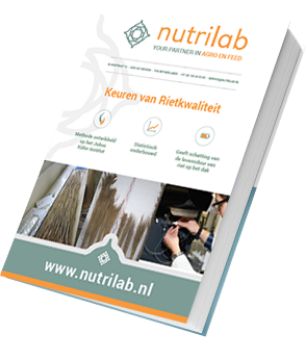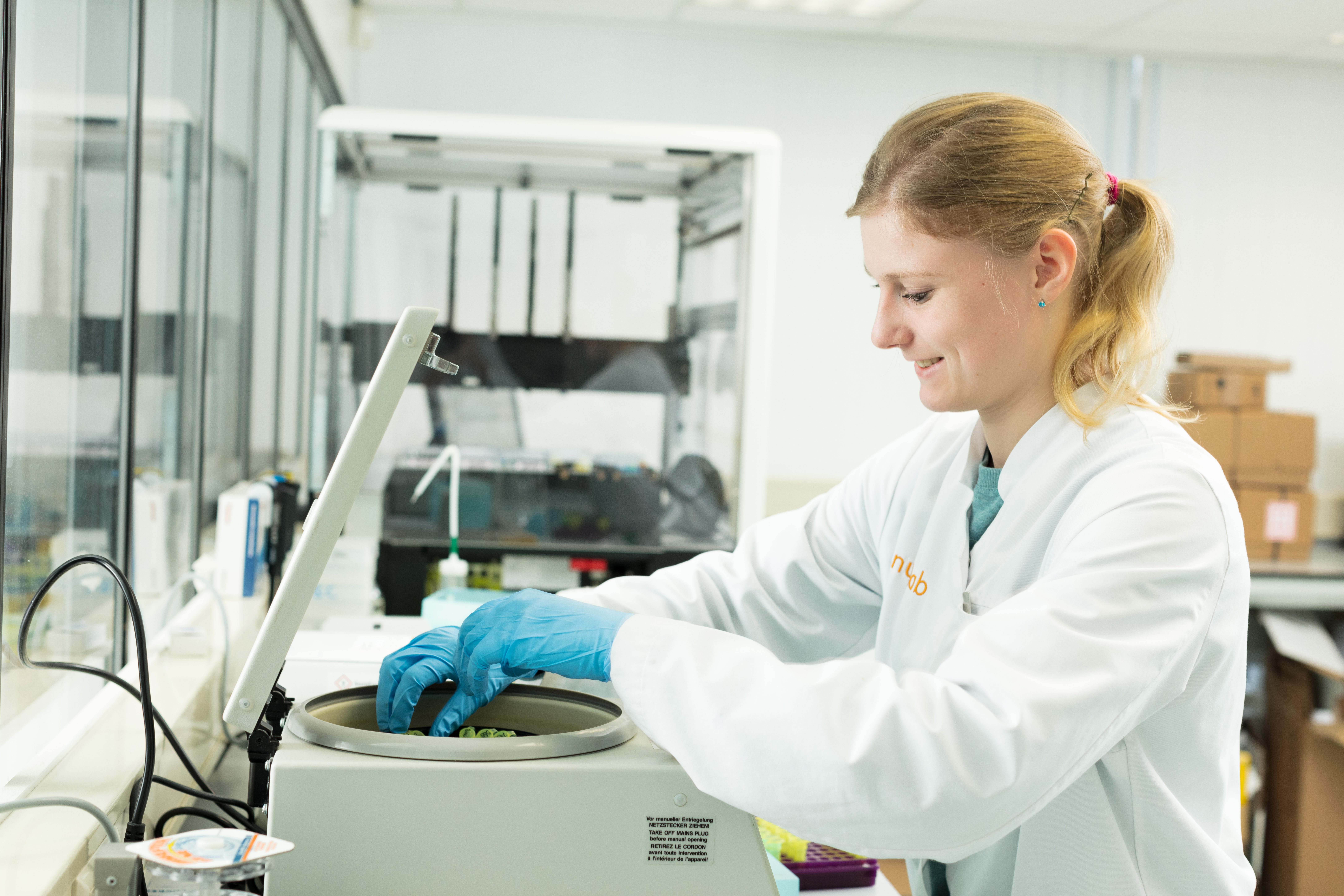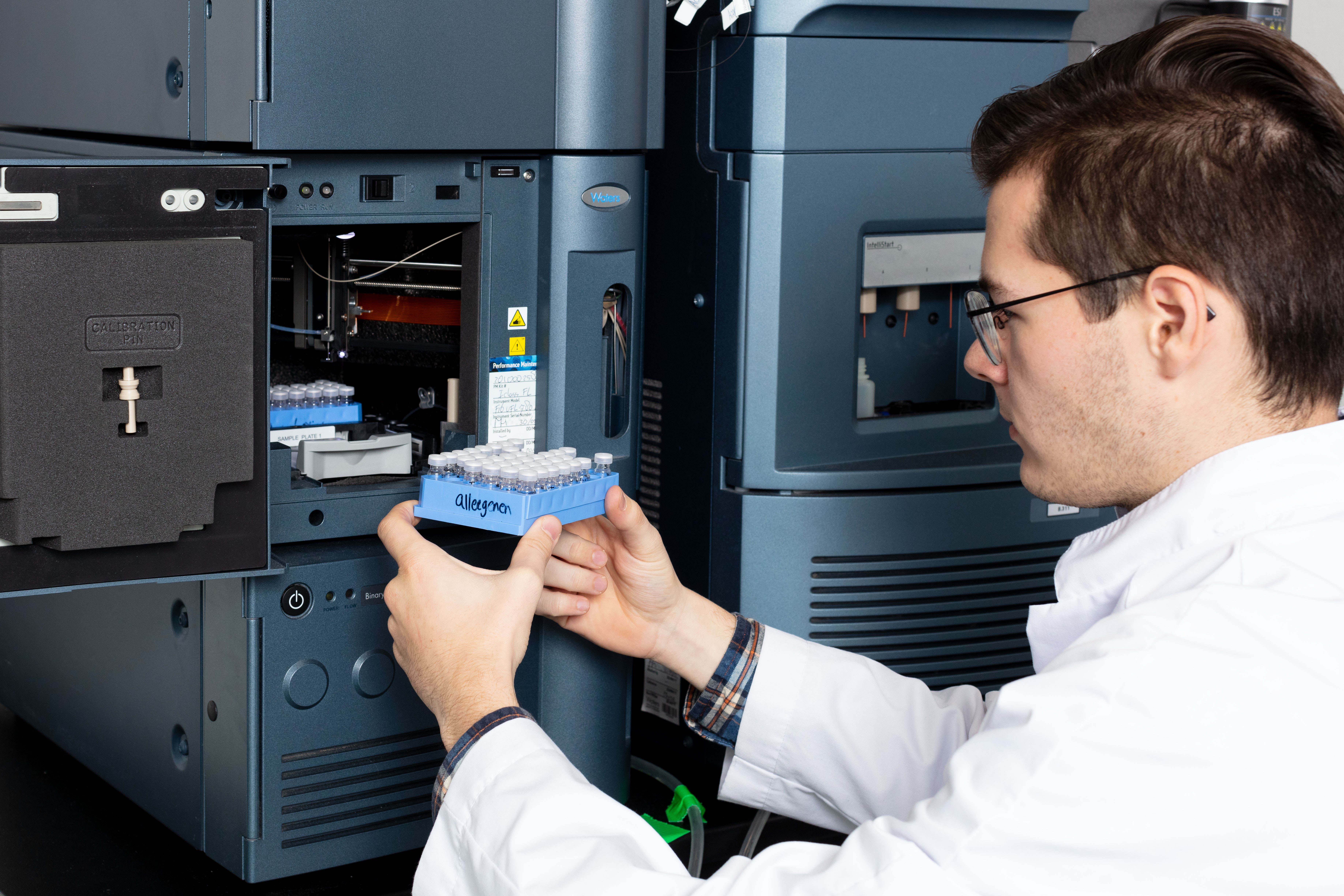
Would you like to be kept informed of developments?
In our free white paper, we share information about the new rules of legislation, innovations in analysis and we tell you about the digitisation of the market. Download our white paper for free!
 Analysis Selector
Analysis Selector
Nutrilab is an expert in allergen analysis. Allergens are proteins that can trigger allergic reactions. The European Union has specified, in regulation EU 1169/2011, that food allergens, which commonly cause hypersensitive reactions, must be indicated on food labels. Nutrilab carries out allergen testing using analysis techniques such as ELISA, PCR and LC-MS/MS. This use of validated analysis methods combined with extensive knowledge of food products ensures that Nutrilab delivers reliable results. Nutrilab has long been the in-house laboratory for the Dutch Coeliac Society. Nutrilab has the facilities to analyse and detect the following allergens:
|
Eggs |
Almonds |
|
Gluten |
Cashew nuts |
|
Lupin |
Hazelnuts |
|
Milk, including lactose |
Macadamia nuts |
|
Mustard |
Brazil nuts |
|
Crustaceans |
Pecan nuts |
|
Celery |
Peanuts |
|
Sesame seeds |
Pistachios |
|
Soy |
Walnuts |
|
Sulphite |
|
|
Fish |
|
|
Molluscs |
|

The ELISA analysis is based on an antigen-antibody reaction. The wells in the microplate are coated with specific antibodies for the allergen to be analysed. By adding standards or sample solutions to these wells, the allergen present in the solution binds to the specific antibodies on the well wall. The sample components which do not bind are washed away. The attached allergens are detected using another antibody linked to the enzyme peroxidase. The antibody binds itself to the already formed antibody-antigen complex and forms an antibody-antigen-antibody complex, or a ‘sandwich’. The unbound antibody-enzyme conjugates are washed away. An enzyme substrate (urea peroxide) and chromogen (tetramethylbenzidine) are then added. During incubation, the bound enzyme converts the colourless chromogen into a blue-coloured complex. Finally, a stop solution is added to terminate the colorimetric reaction and the colour changes to yellow. The colour is measured with a photo spectrometer at 450 nm. The measured absorbency is the measurement for the concentration of the allergen in the sample. The allergen content is quantitatively determined according to set standards.
Real-time PCR is used to detect allergens. This technique isolates DNA from products. A PCR preparation is made consisting of a buffer, DNA, primers, nucleotides (the building blocks of DNA), polymerase and a fluorescent colouring agent. Depending on the allergen to be analysed, certain specific primers are added to the PCR mixture. These primers ensure that the allergen DNA replicates quickly within a short period. By adding DNA from the standards and DNA from the products to be analysed to the PCR and running the PCR through a thermal cycling programme, allergen DNA copies are made. These copies are measured in the reaction by the fluorescent colouring agent and DNA copies, which emit a signal. The more copies are created during the reaction, the stronger the signal. When the allergen is not present in the product, the DNA will not replicate, and there will be no signal to measure. This analysis can, therefore, determine whether an allergen is present in the product.

Together with the Wageningen University BU Bioscience department, Nutrilab has developed a method to measure more than 21 allergens in a single LC-MS/MS run. The main advantage of this method is that this significantly reduces the cost price of analysing multiple allergens in a single sample. This method has other added benefits compared to traditional ELISA and PCR analysis techniques.
The method involves the analysis of all protein-based allergens specified in EU regulation 1169/2011, plus a few allergens for non-European markets.
|
LC-MS/MS analysis on allergens: |
||
|
Whole egg powder Egg white Egg yolk
Gluten Barley Oats Rye Spelt Wheat
Lupin
Milk Casein β-lactoglobulin |
Mustard Brown mustard White/yellow mustard
Nuts Almond Cashew nuts Hazelnuts Macadamia nuts Brazil nuts Pecan nuts Pistachios Walnuts
Peanuts |
Crustaceans
Molluscs |
Nutrilab’s LC-MS/MS allergen identification method uses three or more protein fragments, or peptides, from the allergen concerned. For each peptide, at least two or more transitions are run through the MS (mass spectrometer) The proportions of the various allergenic proteins in a sample are also used to evaluate the results.
We can use peanuts as an example to clarify this. Peanuts contain many different proteins. The primary allergenic proteins in peanuts are AraH1, AraH2, AraH3, AraH4, AraH5 and AraH6. These proteins occur in fixed proportions in peanuts. By analysing the presence and ratios of these various proteins, a high level of accuracy and selectivity is achieved.


We will be happy to visit you to discuss any quality questions or issues you may have.
Plan an advisory meeting
In our free white paper, we share information about the new rules of legislation, innovations in analysis and we tell you about the digitisation of the market. Download our white paper for free!


Powered by Wallbrink Crossmedia